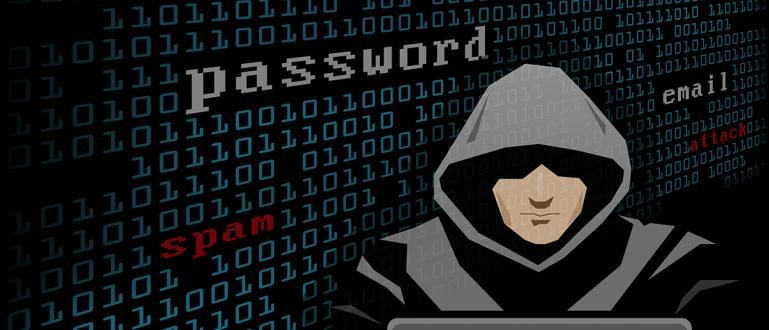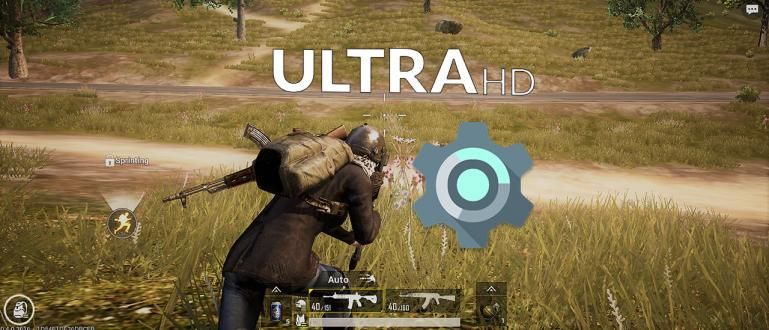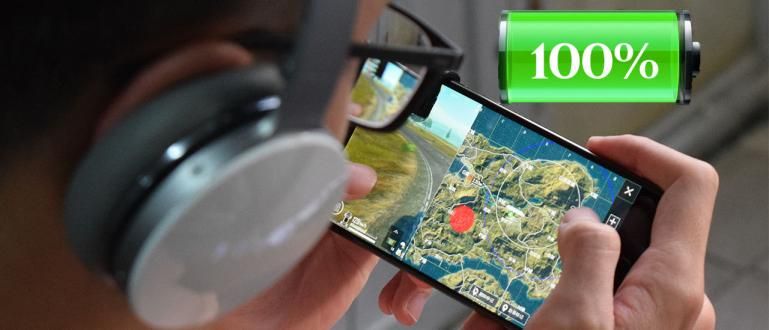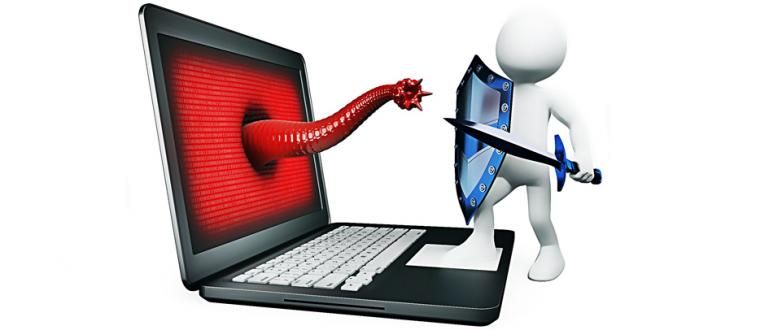What is CMD? and what is the actual function of CMD? Here is a collection of the most complete CMD commands and their functions that you can learn.
Are you a Windows PC user? Looking for a set of commands Command Prompt (CMD) which can make it easier to operate the device?
Although currently all the cool features in the Windows operating system can be used directly in mode GUI (Graphical User Interface) that is beautiful, but in fact CMD still cannot be abandoned by its users.
Whether it's to help in the use of basic features, to doing things that are very technical. In fact, not a few of them are looking for CMD commands to hack websites, you know, gang.
Well, talking about the Command Prompt command, in this article Jaka will give you a collection of CMD commands and their functions that you can try. Come on, take a look!
What is Command Prompt?

Photo source: TechnoLog360 (Before learning how to open Command Prompt and its various commands, let's see what CMD is first).
Before discussing further about the set of CMD commands, actually you already know it yet what is command prompt?
Not just an ordinary program that is presented specifically for Windows PC users, the Command Prompt actually has a very important role, you know, gang!
Command Prompt or often also called CMD is basically an application command line interpreter (CLI) which is used to execute commands entered by the user.
That way, you can also gain more control over the operation of the computer through the use of the CMD command code (Command Prompt code) this.
How to Open Command Prompt
To access the Command Prompt itself is actually very easy because this program is installed directly on laptops with Windows OS, either Windows 10, 8, or 7.
So, you don't have to bother looking for a Command Prompt download link on the internet, gang!
Now, regarding how to open the Windows 10, 8, or 7 Command Prompt, you can see the following steps:
Step 1 - Type 'Command Prompt' in Windows search field
First, in the Windows search field you type keywords'Command Prompt'.
If you have found it, right click on the program and select 'Run as administrator'.

Photo source: JalanTikus (Above is one step on how to open Command Prompt).
Step 2 - Command Prompt has been successfully opened
- If you have done the above steps, then the Command Prompt has been successfully opened. Here is a display of CMD.

In addition to Windows search, there is also an alternative way to open the Command Prompt which is much easier, gang, by using keyboard shortcuts.
You just need to press the button Win+R on the keyboard, then type "CMD" (without quotes). Then, press OK.

So, now you understand how to open CMD? If you have, now is the time for you to see the collection of CMD commands and their functions below!
Collection of CMD Commands and Their Functions
After knowing what CMD is and also how to open it, then Jaka will also give you a collection of CMD commands and their functions that you can try yourself, gang.
Want to know anything? Come on, see the full list below!
1. List of CMD Commands For WiFi Networks

Photo source: Masahen (Want to try to hack someone's network? You'd better study the list of CMD commands for WiFi networks below).
Can't find a special command prompt hack that can help you break into WiFi or even hack someone's laptop/PC?
Basically, there is no CMD command for any hack that is intentionally designed for users to do illegal things, gang.
However, if you want to learn about network management via CMD yourself, you can check out the list of CMD commands for the most frequently used WiFi networks below.
| CMD command | Function |
|---|---|
| ping | Checking network connection |
| tracert | Trace route to a remote host |
| pathping | Provides latency and packet loss info for each node on the network path |
| ipconfig/all | Display connection configuration |
| ipconfig/displaydns | Display DNS cache content |
| ipconfig/flushdns | Clearing cached DNS content |
| ipconfig/release | Release all configuration |
| ipconfig/renew | Updating all connections |
| ipconfig/registerdns | Refresh DHCP & re-register DNS |
| ipconfig/showclassid | Display DHCP Class ID |
| ipconfig/setclassid | Modify DHCP Class ID |
| getmac | Displays the MAC address of the user's network adapter |
| nslookup | Checking the IP address on the Name Server |
| netstat | Displays active TCP/IP connections |
| netstat -ano | Find out if your computer is being used by someone else or find out what you are doing |
| net view | Displays the names of devices connected to your WiFi with their respective PC names |
| arp -a | Info of devices connected to WiFi with IP address, MAC and also dynamic or static type |
| netsh wlan show profiles | Displays all WiFi networks that the device has ever connected to |
| netsh wlan show profile name="WiFi name" key=clear | Displays detailed WiFi network information including the password |
2. List of Basic CMD Commands

In addition to CMD commands for WiFi networks, there are also various basic CMD commands that you should learn to become more proficient at operating computers, gang.
Well, for those of you who don't understand the Command Prompt function, Jaka has also given a brief explanation of its functions which you can see below.
| CMD command | Function |
|---|---|
| assoc | View and change file extension name associations |
| attrib | View, set, or delete attributes read-only, archive, system, and hidden attached to a file or folder |
| CD | Display the folder name (directory) or change the directory location/position |
| chdir | Has the same function as the cd command |
| chkdsk | Checks and displays disk status reports by file system |
| chkntfs | Checking the NTFS file system |
| copy | Copying files from one location (directory) to another |
| color | Change text color in Command Prompt |
| convert | Converting a FAT partition to NTFS |
| date | View and change the date |
| defrag | Do defragmentation |
| del | Deleting files and inserting into recycle bin |
| deltree | Deleting files permanently (not logged into recycle bin) |
| dir | View a list of files and sub-directories in a directory |
| diskpart | Manage hard drives on your computer or laptop |
| add | Create a new partition |
| assign | Assign letters to the new partition |
| delete | Deleting a partition |
| details | View information about the selected partition |
| driverquery | Displays a list of drivers installed on your computer or laptop |
| exit | Exit Command Prompt or close the process batch script in progress |
| find | Searching for specific text in a file |
| logoff | Stopping a session user certain from a computer or laptop |
| move | Move one or more files to another directory |
| msg | Send messages to other users on a local computer network |
| Printing a text file from the Command Prompt | |
| pause | Stop the file batch in progress |
| rename | Rename files and directories |
Other CMD Commands Alphabetically

Still haven't found a cool CMD command you can try? If that's the case, it's better if you look at the list of other CMD commands in alphabetical order, gang!
A
| CMD command | Function |
|---|---|
| addusers | Add and list users in a CSV file |
| at | Execute command at specific time |
| admodcmd | Change content in bulk in active directory |
| arp | Mapping IP addresses to hardware addresses |
| associate | One step file association |
| assoc | View and change file extension name associations |
| attrib | View, set, or delete attributes read-only, archive, system, and hidden attached to a file or folder |
| CD | Display the folder name (directory) or change the directory location/position |
B
| CMD command | Function |
|---|---|
| bcdboot | Create and repair system partition |
| bcdedit | manage boot configuration data |
| bitsadmin | Manage Background Smart Transfer Service |
| bootcfg | Editing boot configuration in Windows |
| break | The CTRL+C key combination cannot be used to stop the MS-DOS process |
C
| CMD command | Function |
|---|---|
| cacls | Change file permissions |
| csvde | Import or Export data from active directory |
| cscmd | Configure offline files on client computers |
| cprofile | Cleans the specified profile of wasted space and disables specific user file associations |
| coreinfo | Show mappings between logical and physical processors |
| copy | copy files from one location (directory) to another |
| color | Change text color in Command Prompt |
| convert | Converting a FAT partition to NTFS |
| compress | Compress one or more files |
| compact | Compress files and folders on an NTFS partition |
| comp | Compare the contents of two files or two sets of files |
| cmstp | Install or remove the connection manager service profile |
| cmdkey | Manage saved usernames and passwords |
| cmd | Starting a new CMD shell |
| cls | Clean CMD screen |
| clip | Copy the result of each command (stdin) to the Windows clipboard |
| cleanmgr | Use clean temp files and recycle junk automatically |
| cipher | Encrypt/decrypt files and folders |
| choice | Accept user input (via keyboard) to batch file |
| chkntfs | Checking the NTFS file system |
| chcp | Displays the number of active console code pages |
D
| CMD command | Function |
|---|---|
| date | View and change the date |
| defrag | Do defragmentation |
| del | Deleting files and inserting into recycle bin |
| deltree | Deleting files permanently (not logged into recycle bin) |
| delprof | Delete user profile |
| devcon | Access command line device manager utility |
| dsmgmt | Manage Active Directory Lightweight Directory Services |
| dsrm | Remove object from active directory |
| dsmove | Rename or move Active Directory objects |
| dsmod | Modify objects in active directory |
| dsquery | Find objects in active directory |
| dsget | View objects in active directory |
| dsadd | Adding objects to active directory |
| dsacls | View and edit access control entries for objects in Active Directory |
| driverquery | Displays a list of installed device drivers |
| doskey | Edit command line, recall commands, and create macros |
| discussion | View used space in folder(s) |
| disk shadow | Access Disk Shadow Copy Service |
| diskpart | Make changes to storage partitions, both internal and connected |
| diskcopy | Copy data from one floppy disk to another |
| diskcomp | Compare the contents of two floppy disks |
| diruse | Show disk usage |
| dirquota | Manage File Server Manager Resource quota |
| dir | Displays a list of files and folders |
E
| CMD command | Function |
|---|---|
| erase | Delete one or more files |
| endlocal | End of localization environment changes in batch files |
| echo | Enable or disable command-echoing feature, display message on screen |
| exit | Exit command line (Exit current batch script) |
| extract | Uncompress one or more Windows cabinet files |
| expand | Uncompress one or more .CAB files |
| explorer | Open Windows Explorer |
| eventtriggers | View and configure event triggers on local and remote machines |
| eventcreate | Add custom event to Windows event log (Admin rights required) |
| eventquerry | Show a list of events and their properties from the event log |
F
| CMD command | Function |
|---|---|
| ftype | Show/Change file extension type association |
| fsutil | File system utility for managing file and drive properties |
| format | Format disc |
| for | Run command in loop for file for specified parameter |
| finger | Show information about the user on the specified remote computer |
| find | Searching for a specific text string in a file |
| ftp | Use an FTP service to transfer files from one PC to another |
| free disk | Checking free space on disk |
| forfiles | PEnable/disable temporary folder |
| findstr | Finding string patterns in files |
| fc | Compare two files |
G
| CMD command | Function |
|---|---|
| graftabl | Enable the ability to display additional characters in graphics mode |
| gpresult | Show Group Policy Settings and Result Policy Sets for users |
| getmac | Displays the MAC address of the user's network adapter |
| gpupdate | Update local and active directory based on group policy settings |
| goto | Directs batch programs to channels identified by labels |
H
| CMD command | Function |
|---|---|
| hostname | Display computer hostname |
| help | Display a list of commands and view online information for them |
I
| CMD command | Function |
|---|---|
| inuse | Replace the file currently in use by the OS (needs to be restarted) |
| ipseccmd | Configure IP Security policy |
| irftp | Sending files via infrared link (infrared function required) |
| if | Conditional processing in batch programs |
| icacls | Change file and folder permissions |
| ipxroute | View and modify routing table information used by IP protocol |
| ipconfig | View and change IP configuration |
| ifmember | Displays groups that are active users |
| iexpress | Create a self-extracting zip archive |
J
There is no CMD command.
K
There is no CMD command.
L
| CMD command | Function |
|---|---|
| logoff | Stopping a session user certain from a computer or laptop |
| lpq | Displaying the status of the print queue |
| label | Edit disk label |
| local | Show membership of local groups |
| logman | Manage performance log monitor |
| lpr | send files to a computer running the Line Printer Daemon service |
| logtime | Display date and time log in file |
M
| CMD command | Function |
|---|---|
| mstsc | Making connections remote desktop |
| msinfo32 | Display system information |
| msiexec | Install, modify, configure using Windows Installer |
| msg | Send messages to other users on a local computer network |
| move | Move one or more files to another directory |
| moveuser | Moving user accounts to a domain or between machines |
| mountvol | Create, register, or delete a volume mount point |
| more | Show one screen output at the same time |
| makecab | Create a .CAB . file |
| macfile | Manage file servers for Mackintosh |
| munge | Find and Replace text in files |
N
| CMD command | Function |
|---|---|
| net | Manage network resources |
| netdom | Domain Manager |
| netsh wlan show profiles | Displays all WiFi networks that the device has ever connected to |
| netsh wlan show profile name="WiFi name" key=clear | Displays detailed WiFi network information including the password |
| nbstat | Show network statistics (NetBIOS over TCP/IP) |
| nslookup | Checking the IP address on the Name Server |
| netstat | Displays active TCP/IP connections |
| now | Current display Date and Time |
| ntrights | Edit user account rights |
O
There is no CMD command.
P
| CMD command | Function |
|---|---|
| path | Displays or sets the search path for executable files |
| pathping | Provides latency and packet loss info for each node on the network path |
| pause | Stop the file batch in progress| |
| perms | Show permissions for users |
| performance | Monitor performance |
| powercfg | Configuring power settings |
| Printing a text file from the Command Prompt | |
| pause | Stop the file batch in progress |
| prnmgr | Add, remove, printer list set default printer |
| prompt | Changing the command prompt |
| psinfo | List of information about the system |
| pskill | Process kills by name or process ID |
| pslist | List of detailed information about processes |
| pspasswd | Change account password |
| psservice | View and manage services |
| pushd | Save and then change directory now |
Q
| CMD command | Function |
|---|---|
| qgrep | Search files for lines that match a specific pattern |
| qprocess | Display information about the process |
R
| CMD command | Function |
|---|---|
| reg | Read, set, export, delete keys and values |
| recover | Repair corrupted files from damaged disk |
| regedit | Import or export registry settings |
| regini | Change Registry Permissions |
| ren | Rename a file or files |
| replace | Replace or update one file with another |
| rd | Delete folder |
| rmtshare | Share folder or printer\ |
| route | Manipulating network routing tables |
| runas | Run the program under a different user account |
S
| CMD command | Function |
|---|---|
| sc | Service control |
| schtasks | Schedule commands to run at specific times |
| sclist | Show NT Layanan Services |
| setlocal | Controlling environment variable visibility |
| setx | Set environment variables permanently |
| share | Register or edit file share or share print |
| shift | Shift position replaced parameter in a batch file |
| shutdown | Computer shutdown |
| sleep | Put the computer in sleep mode for a certain number of seconds |
| systeminfo | Displays detailed configuration information about computer devices |
T
| CMD command | Function |
|---|---|
| tasklist | Register to run applications and services |
| taskkill | Delete running process from memory |
| time | Display or set system time |
| timeout | Delayed processing of a batch file |
| title | Setting the window title for the cmd.exe session |
| tree | folder structure graphic display |
| type | Display the contents of a text file |
| tracert|Trace route to a remote host |
U
| CMD command | Function |
|---|---|
| usrstat | Register domain username and last login |
V
| CMD command | Function |
|---|---|
| ver | Show installed OS version number |
| vol | Show disk volume label and serial number |
| vssadmin | Show shadow backup copy, install shadow copy writer and provider |
| verify | Verify if files are properly stored on disk |
W
| CMD command | Function |
|---|---|
| waitfor | Used to synchronize events between networked computers |
| wevtutil | Get information about event logs and publishers |
| where | Find and display files in current directory |
| whoami | Show information about active users |
| windiff | Compare the contents of two files or sets of files |
| winrm | Windows Remote Management |
| wuauclt | Windows Update Agent to download new update files |
X
| CMD command | Function |
|---|---|
| xcalcs | Change ACLs for files and folders |
| xcopy | Copy files or directory tree to another folder |
Y
There is no CMD command.
Z
There is no CMD command.
Well, that was a collection of CMD commands and their functions that Jaka managed to collect for you, gang.
Starting from basic CMD commands to CMD commands for WiFi networks, Jaka has explained everything in detail so that you will understand more when using it.
Meanwhile, for those of you who are looking for CMD commands to hack websites and so on, you better learn through Jaka's article about "7 Ways Hackers Hack WiFi Passwords". Good luck!
Also read articles about Out Of Tech or other interesting articles from Shelda Audita









